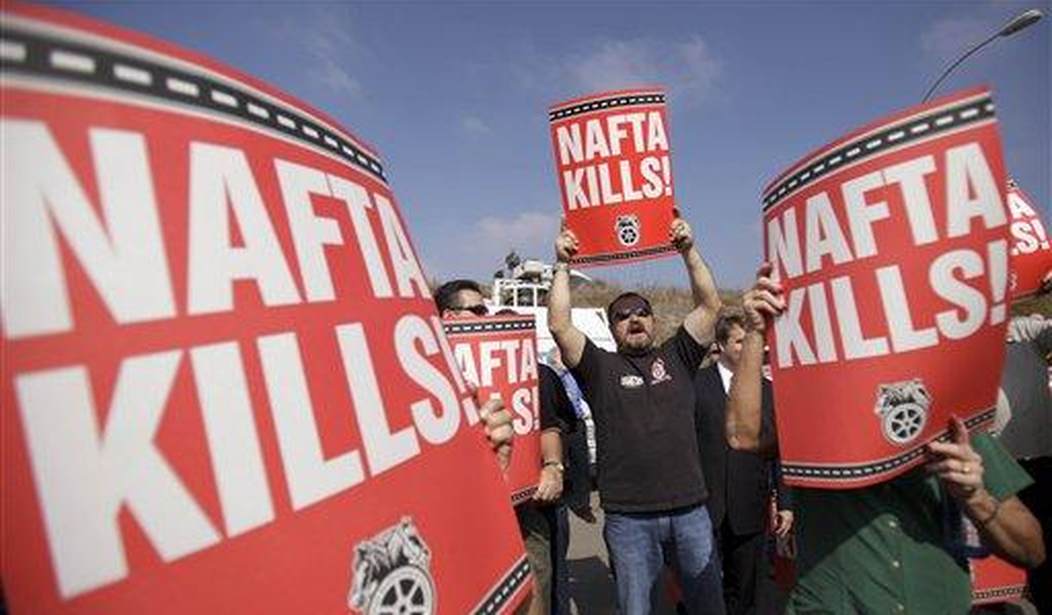For the past 50 years, many of America’s inner cities have faced severe decline, and for 50 years, presidential candidates have promised to turn around decaying urban centers.
This year’s election is no different. Both Democrat Hillary Clinton and Republican Donald Trump have pledged to fix broken inner-cities, and for the first time since the 1980s, states such as Michigan and Pennsylvania—which are home to many economically depressed areas—are considered to be up for grabs by many political analysts.
One of the reasons Trump has been more successful than other Republican candidates in states with struggling urban areas, especially those that have lost a significant amount of manufacturing jobs over the past two decades, is because Trump has committed to reforming or ending many U.S. trade agreements, including the North American Free Trade Agreement (NAFTA). Many workers in Illinois, Indiana, Michigan, New York, Ohio, and Pennsylvania blame poorly constructed trade agreements and unfair trade practices with countries such as China for the economic decline experienced in many old manufacturing-dominated parts of those states.
Trump has not only promised to rewrite many trade agreements, he’s also said he would impose tariffs or other punitive measures on countries that use currency manipulation to undercut U.S. manufacturers.
Clinton has also garnered a significant number of supporters in “Rust Belt” states for her promise to punish many businesses that choose to leave the country with an“exit tax”and for her plan tocut some taxesand provide tax credits for certain businesses that make long-term investments in economically depressed areas. Clinton also says she’ll raise taxes on businesses and wealthy individuals and use that money to pay for more government-supported infrastructure projects.
Recommended
While reworking trade agreements and providing tax incentives for businesses in inner-cities could be beneficial, if properly designed and implemented, there is much more that could be done to transform urban areas that are currently failing into hotbeds of innovation and economic activity.
The first step to implementing positive and lasting reform of U.S. urban areas is to radically alter the failing traditional public education system. As it is currently constructed, poor and middle-income kids are forced to go to whichever public school is closest to home, regardless of education quality or safety. If all children had the freedom to attend the school of their choice, the safe, well-run schools would thrive and failing schools would be forced to reform, change their leadership, or close so more-productive schools could open in their place.
But how can poor and middle-income kids afford to pay fees at other public schools or tuition at private schools? Parents should be empowered with a no-limits, publicly funded voucher that could be used to pay for education-related expenses, including tuition and homeschooling costs. The voucher would cost states and localities the same or less as the per-pupil funding they already provide, but it would give parents and students the freedom they need to find the right learning environment.
Voucher programs, as well as many other school choice programs, have been wildly successful in myriad places where they have been tried, and anationwide surveyof parents conducted by Brilliant Corners Research Strategies in 2015 found 70 percent of African-American parents support such a plan.
Trump has said repeatedly he supports private school choice, but he has not laid out a detailed education plan.Clintonhas shifted away from her support of many school choice programs over the years and has said she does not support vouchers or any “substitute” of the traditional public school model.
A second way to improve inner-cities would be to incentivize businesses to invest heavily in declining urban areas. Clinton plans on doing this by cutting corporate gains taxes for certain industries—which have yet to be identified—that invest in long-term projects in economically depressed areas, while raising taxes for other businesses and short-term investors. This strategy could help some inner-city areas, but only at the expense of surrounding regions, which won’t be able to compete with the tax advantages provided by the federal government to those investing in urban centers.
A much better strategy would be to encourage U.S. businesses to bring the roughly$2 trillionthey currently have situated overseas to avoid high corporate tax rates back into the country. The best way to accomplish this is to allow these businesses to use the money in America without having to pay taxes on it—so long as they invest the funds in specific economically depressed areas and agree to hire a certain percentage of their employees from the community that currently exists in these regions.
While some, including Clinton, have called this strategy a form of corporate welfare that helps billionaires, it would be far better to have funds pumped into inner-city communities than to have them sitting in foreign bank accounts.
Trump has said he wants to incentivize businesses to bring the $2 trillion back into the United States, but he also says his administration would charge a 10 percent tax on those dollars coming back into the country.
While these are just two of many ways to help turn around America’s inner-cities, they are two vital steps toward improving urban areas that have long been in need of unique and substantial policy changes.
Justin Haskins(jhaskins@heartland.org)is executive editor of The Heartland Institute.

























Join the conversation as a VIP Member